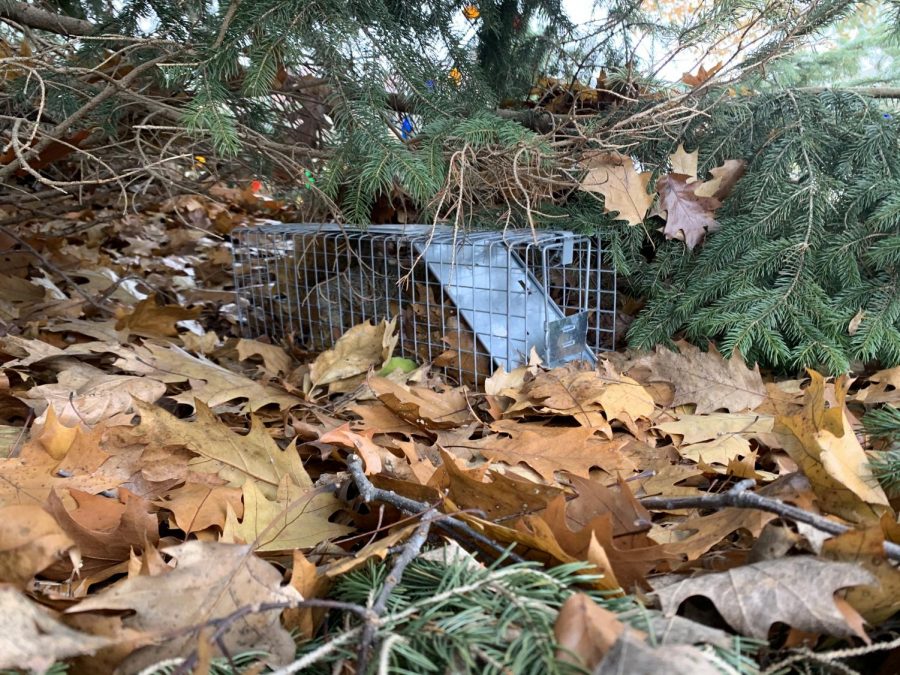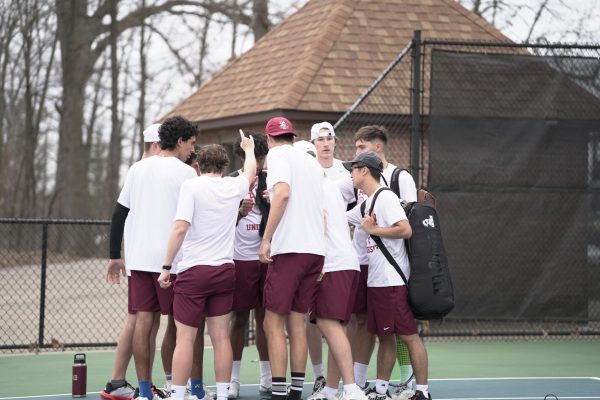Squirrel population appears to decrease on campus; why?
Video captures squirrel caged under Calvin’s pine tree.
There has been a slight decrease in the grey squirrel population on campus over the past several years, prompting concerned students to ask, “Where are they going?”
Geoffrey Van Berkel, grounds manager, suggested a pair of red-tailed hawks are to blame. “We have a pair of red-tailed hawks that frequently call Calvin home,” Geoffrey says. He has noticed the pair returning to raise their young on campus in the past several years, which he believes is responsible for the scarcity in the squirrel population. As the hawks pick off the rodents to feed their young, the rest of the squirrels become shy and move to safer locations.
The pair have returned the last two years, according to Berkel. They are possibly encouraged by the habitat on campus, perfect for hawks raising young, with an abundant food supply and plenty of unclaimed trees and open space. Berkel said, “This year they nested in a high white pine on the west side of Lot 1 near Burton Street. They also like to nest in the woods by the Seminary pond during other years.”
Berkel added that the grounds maintenance team on campus occasionally traps squirrels. This is usually only done if they are causing damage in a certain area or are having too much fun in the trash bins. The team uses live traps, which do not harm the animals, and then relocate them to an area where they will not be destructive. Chimes found one of these traps, which used Cheeto Puffs as bait.
However, hawks and live trapping may not be the only party responsible for the scarcity of Calvin’s grey squirrels this year. Darren Proppe, assistant professor in the biology department, thought several more factors are involved. Proppe suggested that the population of squirrels booms on campus in the late spring. During this time, students are leaving campus for the summer just as the squirrels are giving birth to young, meaning that the rodents and their young have a freer run of campus in the off season. During the winter, grey squirrels that survived the summer keep closer to the trees. This means that there may seem to be fewer squirrels at first glance, while they may simply be more active at times when the campus is not as busy.
Proppe also said that the tree structure on campus may be changing slightly over the years, meaning that the natural forested areas where squirrels tend to live on campus may be more isolated. As Calvin builds more walkways, the stands of trees that provide a home for squirrels grow farther apart. Reluctant or unable to use trees to cross the open space, squirrels may simply stick to the places they know are safe. This may make it seem that there are fewer squirrels in the area, while they may simply be moving with their habitat.
However, Proppe noted that squirrels are remarkably adaptable and adjust well to life around this busy campus. This is especially true given the habitats that are provided for them in the area, both natural forests that are allowed to flourish, and the ones created by maintaining the grounds.
For those who are interested in protecting our campus wildlife, Proppe suggested that students be aware of the importance of maintaining areas of natural habitat in which animals like grey squirrels can flourish. “I think one of the big things is just vouching for the habitats that are on campus that protect those species,” he said. “There is a value to those being on campus.”










Shiloh • Feb 10, 2020 at 8:55 am
I heard a rumor that the kiddos were snacking on squirrels. Why is this not mentioned in the article? Other than that, this is an amazing and well written piece. Good research.